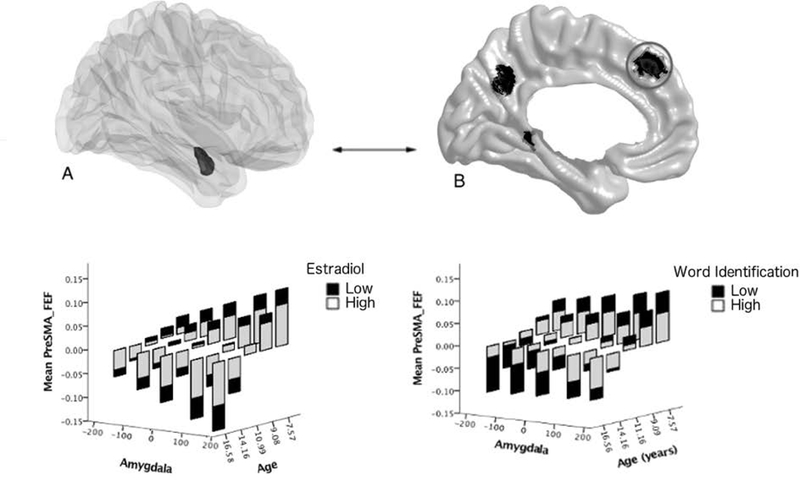FIGURE 2. Age-related associations between estradiol, amygdala-frontal structural covariance and word identification.

Brain figures A (the amygdala is displayed in the dark shaded region) and B (cortical regions are displayed in dark shaded regions) show the brain regions involved in the significant ‘Estradiol*Amygdala*Age’ interaction, with a focus in this figure on the left pre-supplementary motor area and frontal eye field (Pre-SMA and FEF). In order to visualize the interactions between estradiol, age, cortico-amygdalar structural covariance and cognition, graphs display estradiol and cognitive scores as dichotomous groups and each child’s longitudinal structural covariance trajectory is not included. Y axis represents residuals for cortical thickness (averaged over the significant region of the left SMA/FEF). The bars represent the range of expected cortical thickness residuals for each age bracket (e.g. 7–9 years) based on the parameters obtained from the mixed effect model. Age brackets were restricted to the ages for which there were the greatest number of data points (approximately 95% of the data were collected between 7–17 years of age, though the full age range of the sample is 6–22 years old). Note: The data are presented categorically for visualization purposes, i.e. continuous measures of estradiol, age, cortical thickness, amygdalar volumes, and cognitive scores were used in all analyses. (Full statistics are provided in the Results, sections Estradiol-Related Cortico-Amygdalar Structural Covariance and Cortico-Amygdalar Structural Covariance and Cognition). Data from the left amygdala are shown; similar results were present for the right amygdala. The lower left panel shows the age-specific relationship between estradiol and amygdala-frontal structural covariance. Amygdala-frontal covariance switched from positive to negative with increasing age. Higher estradiol levels tended to diminish this age effect such that there was a decrease in positive covariance in younger children and a decrease in negative covariance in older children. The lower right panel shows the age-specific relationship between estradiol-related amygdala-frontal covariance and word identification. The amygdala-frontal covariance related to higher estradiol levels was associated with higher word identification scores across the age range examined.
